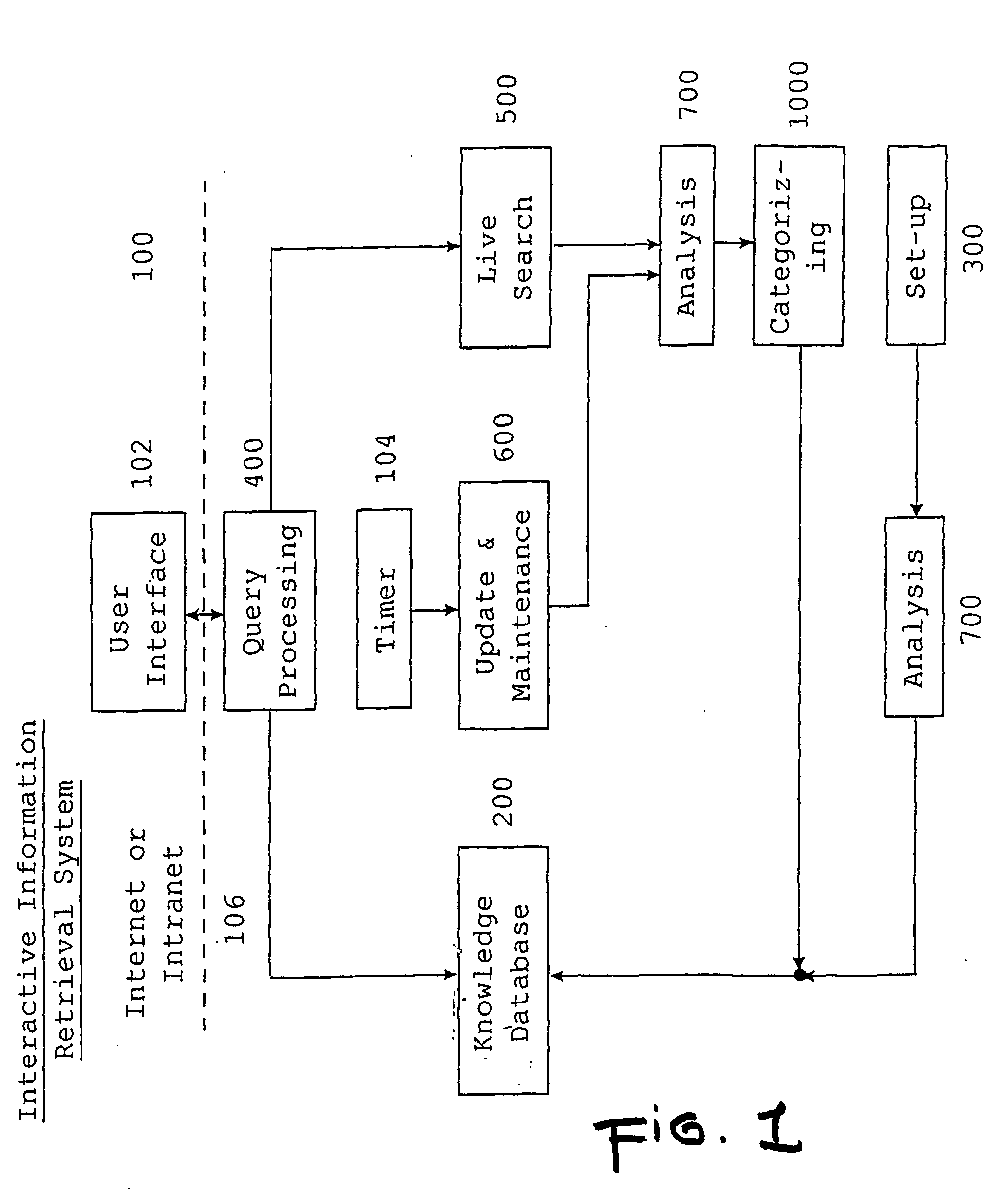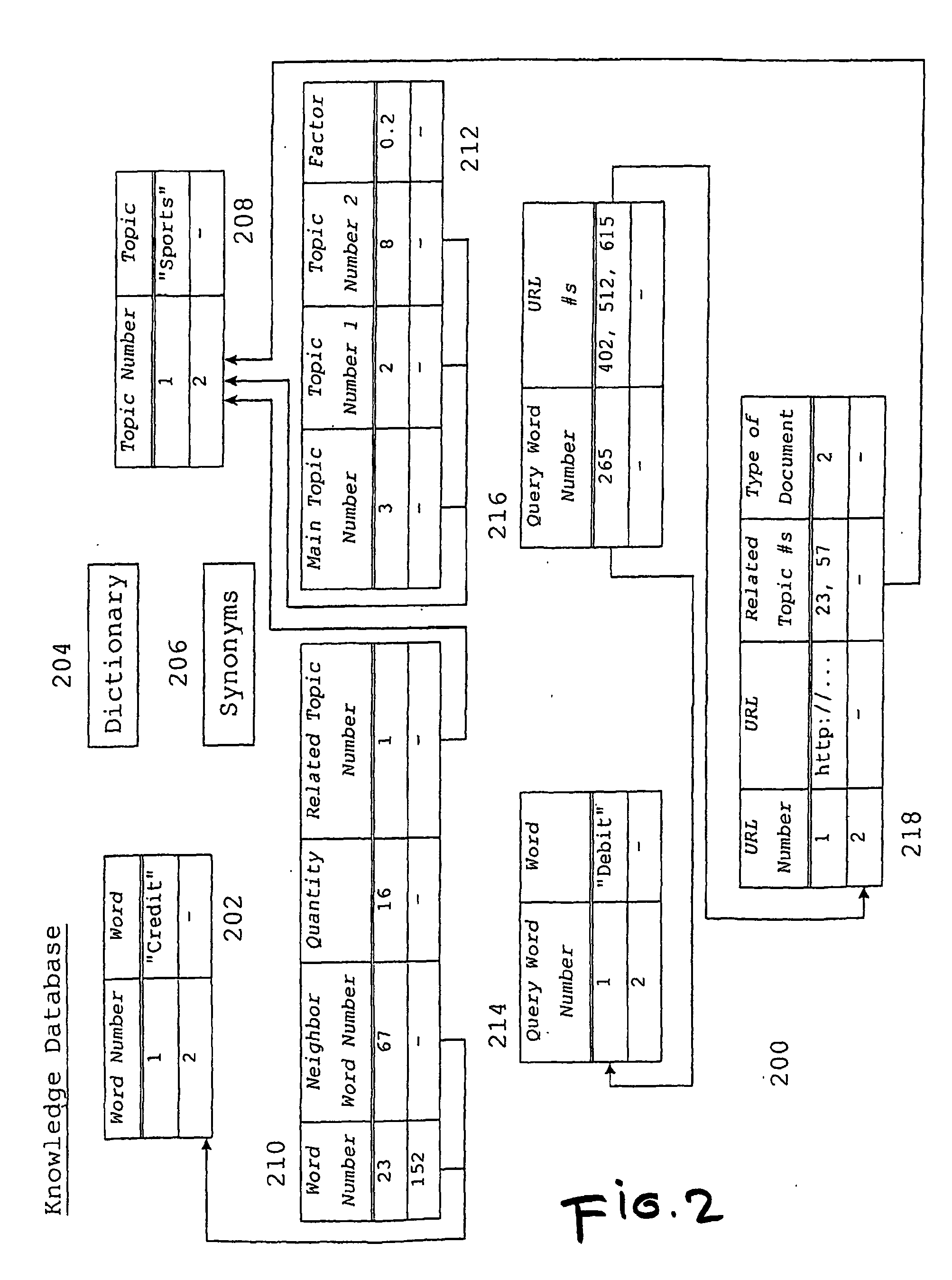Category based, extensible and interactive system for document retrieval
a document retrieval and extensible technology, applied in the field of information retrieval systems with highspeed access, can solve the problems of slow phrase search, system also has other undesirable properties, and lay searchers cannot use these powerful systems with the same degree of success
- Summary
- Abstract
- Description
- Claims
- Application Information
AI Technical Summary
Benefits of technology
Problems solved by technology
Method used
Image
Examples
example 1
Searching Through Multiple Hierarchy Levels
[0266] If the requester enters the search term “headache”, the system looks up that word in the dictionary 204 to ensure correct spelling and also addresses problems of inflection, etc. Next, the system checks through the list of synonyms 206, and if any are found, the system expands the search to search for both terms. When all of these preliminary steps have been completed, the system looks up the word “headache” in the query word table 214 to see if this term has been searched for previously. In this case, the term has been searched for previously, and accordingly, “headache” appears as a query word that the table 214 assigns the query word number of 2.
[0267] Having identified the word and discovered that it had been searched for previously, the system now searches the query linkage table 216 for and retrieves from that table the URL table 218 numbers of all the documents that contain the word. In this case, the URL numbers 17 and 19 a...
example 2
Searching Through Only One Hierarchical Level
[0270] Assuming now that the requester enters the search term “Alka-Seltzer” the system will first check that word against the dictionary 204 and synonyms 206 tables described in Example 1 and address inflection and other problems. After all the necessary checks have been completed, the system goes to the query word table and learns that “Alka-Seltzer” has previously been searched for and has been assigned to the query word number. Accordingly, the system then looks up this word number in the query linkage table 216 and learns that only a single document, assigned to the URL number 20, contains that word. With reference to the URL table 218, the document 20 is only assigned to the one topic number 2. Accordingly, there is no need for interaction with the requester. The single document URL address and document title are displayed to the requester so that the requester may decide whether to browse through the document.
example 3
The Search Term does not Appear in the Query Word Table
[0271] Assume the requester enters the word “heartache” and that the system can not find this in the query word table 214, since this search has never been performed before. After addressing spelling, inflection, and synonym problems, the system commences a live search (FIG. 5) and captures a number of documents that contain “heartache”.
[0272] Through the process of analysis 700 (FIGS. 7, 8 and 9) and categorizing 1000 (FIG. 10), the system adds all the captured documents and the related assigned topics to the URL table 218. This process involves finding adjoining word pairings within each document, looking them up in the word combination table 210, retrieving the associated topic numbers from the table 210, and then going through the process described above of selecting up to four most relevant topics for each document and placing the topic numbers of those four topics, along with the URL address of each document, into the UR...
PUM
 Login to View More
Login to View More Abstract
Description
Claims
Application Information
 Login to View More
Login to View More - R&D
- Intellectual Property
- Life Sciences
- Materials
- Tech Scout
- Unparalleled Data Quality
- Higher Quality Content
- 60% Fewer Hallucinations
Browse by: Latest US Patents, China's latest patents, Technical Efficacy Thesaurus, Application Domain, Technology Topic, Popular Technical Reports.
© 2025 PatSnap. All rights reserved.Legal|Privacy policy|Modern Slavery Act Transparency Statement|Sitemap|About US| Contact US: help@patsnap.com



